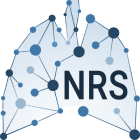Chemotherapy for pulmonary large cell neuroendocrine carcinomas: does the regimen matter?
ABSTRACT
Pulmonary large cell neuroendocrine carcinoma (LCNEC) is rare. Chemotherapy for metastatic LCNEC ranges from small cell lung carcinoma (SCLC) regimens to nonsmall cell lung carcinoma (NSCLC) chemotherapy regimens. We analysed outcomes of chemotherapy treatments for LCNEC.
The Netherlands Cancer Registry and Netherlands Pathology Registry (PALGA) were searched for patients with stage IV chemotherapy-treated LCNEC (2003–2012). For 207 patients, histology slides were available for pathology panel review. First-line platinum-based combined chemotherapy was clustered as “NSCLC-t”, comprising gemcitabine, docetaxel, paclitaxel or vinorelbine; “NSCLC-pt”, with pemetrexed treatment only; and “SCLC-t”, consisting of etoposide chemotherapy.
A panel review diagnosis of LCNEC was established in 128 out of 207 patients. NSCLC-t chemotherapy was administered in 46% (n=60), NSCLC-pt in 16% (n=20) and SCLC-t in 38% (n=48) of the patients. The median (95% CI) overall survival for NSCLC-t chemotherapy was 8.5 (7.0–9.9) months, significantly longer than patients treated with NSCLC-pt, with a median survival of 5.9 (5.0–6.9) months (hazard ratio 2.51, 95% CI 1.39–4.52; p=0.002) and patients treated with SCLC-t chemotherapy, with a median survival of 6.7 (5.0–8.5) months (hazard ratio 1.66, 95% CI 1.08–2.56; p=0.020).
In patients with LCNEC, NSCLC-t chemotherapy results in longer overall survival compared to NSCLC-pt and SCLC-t chemotherapy.

